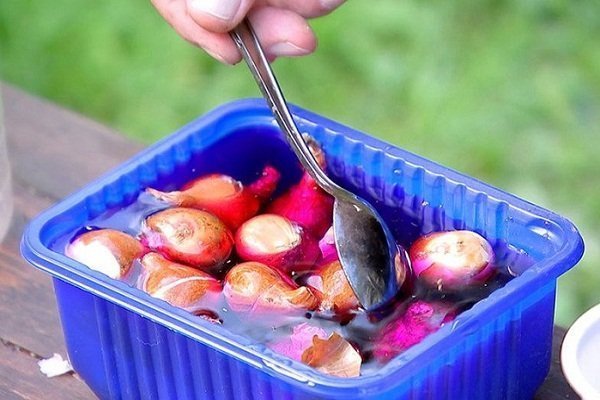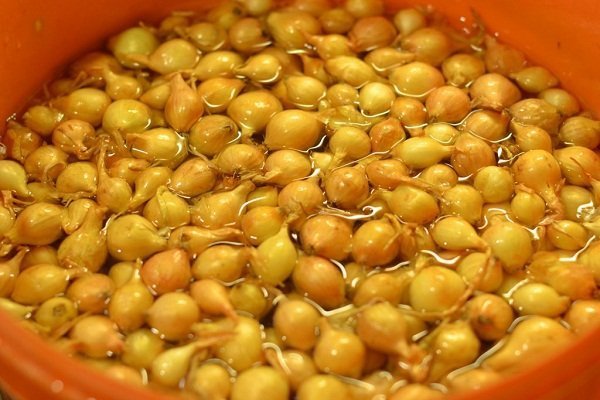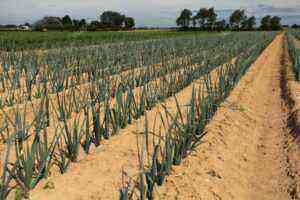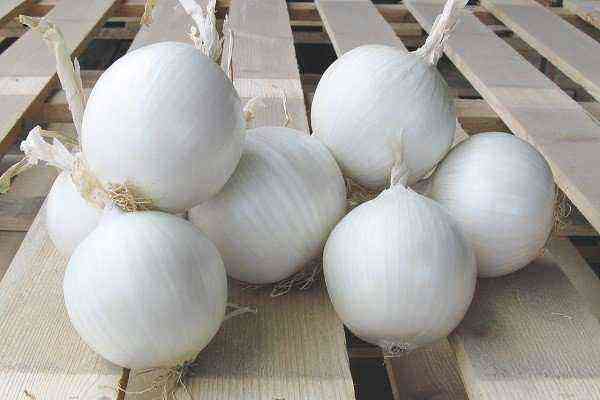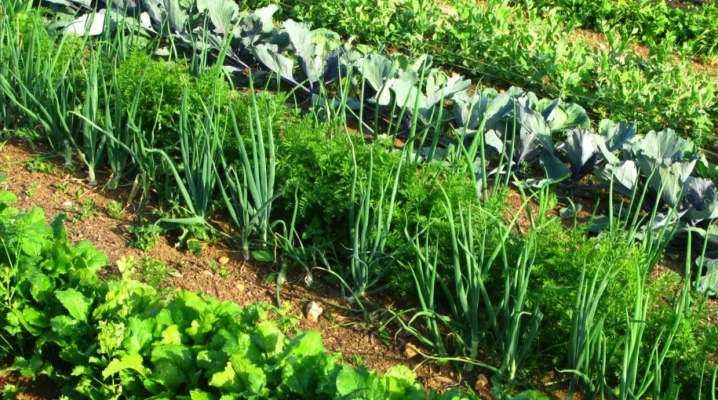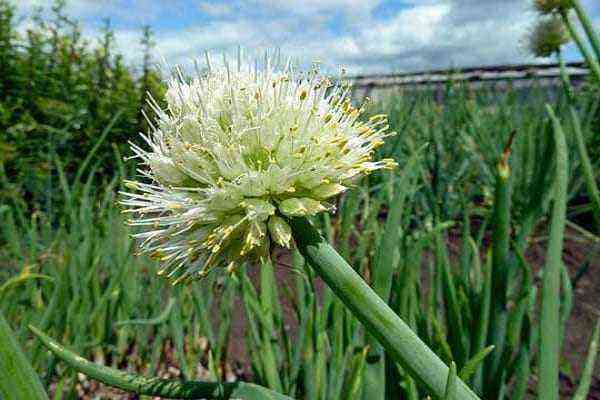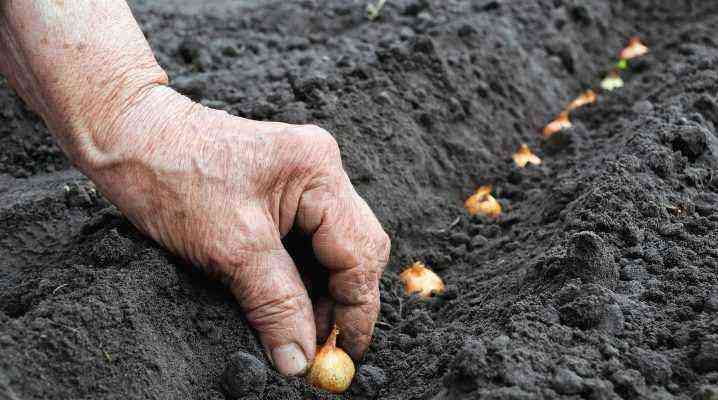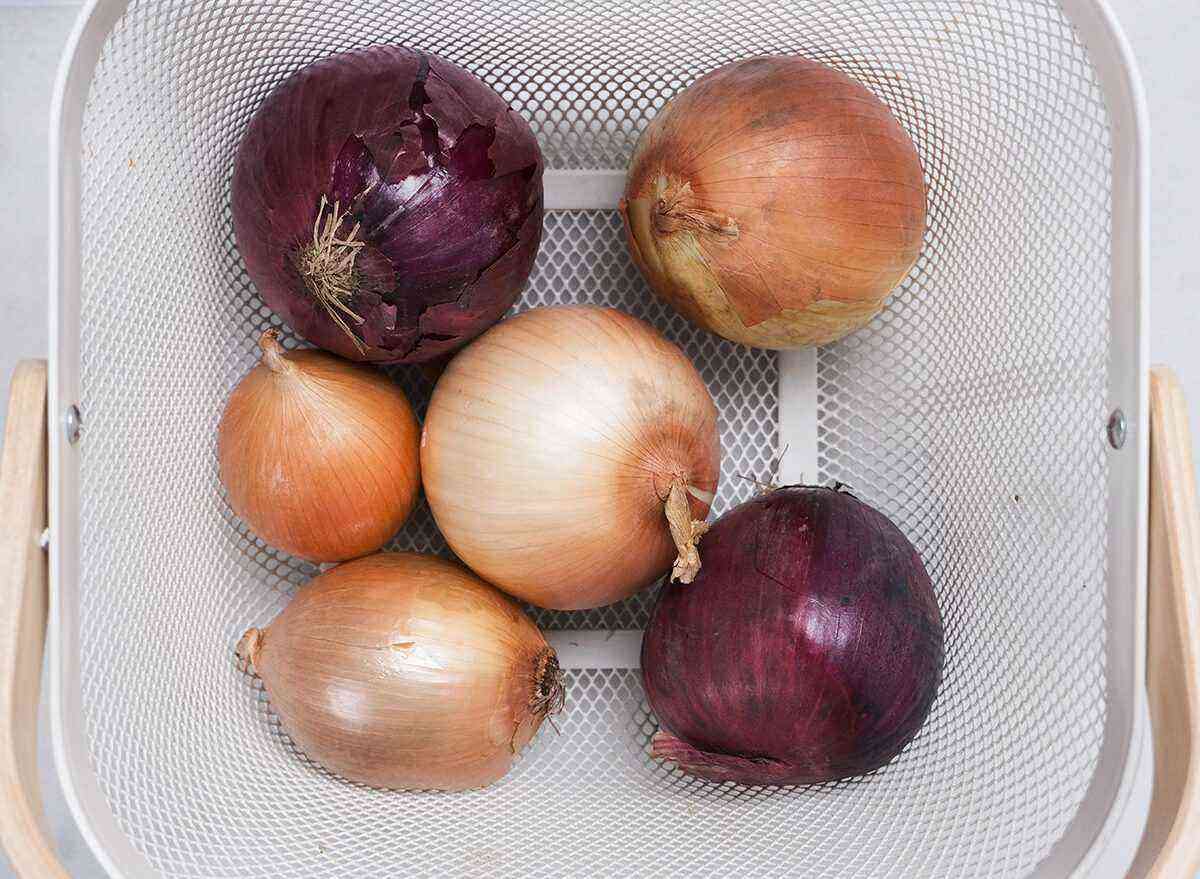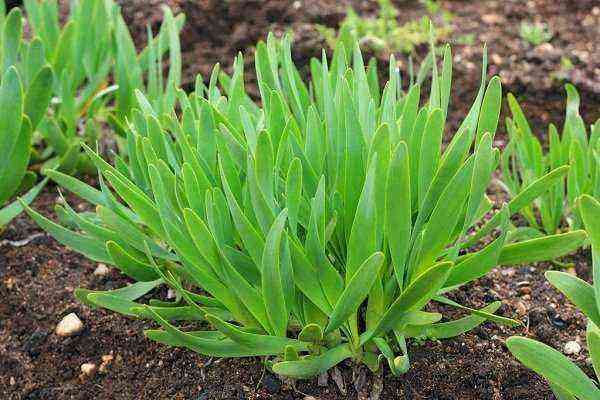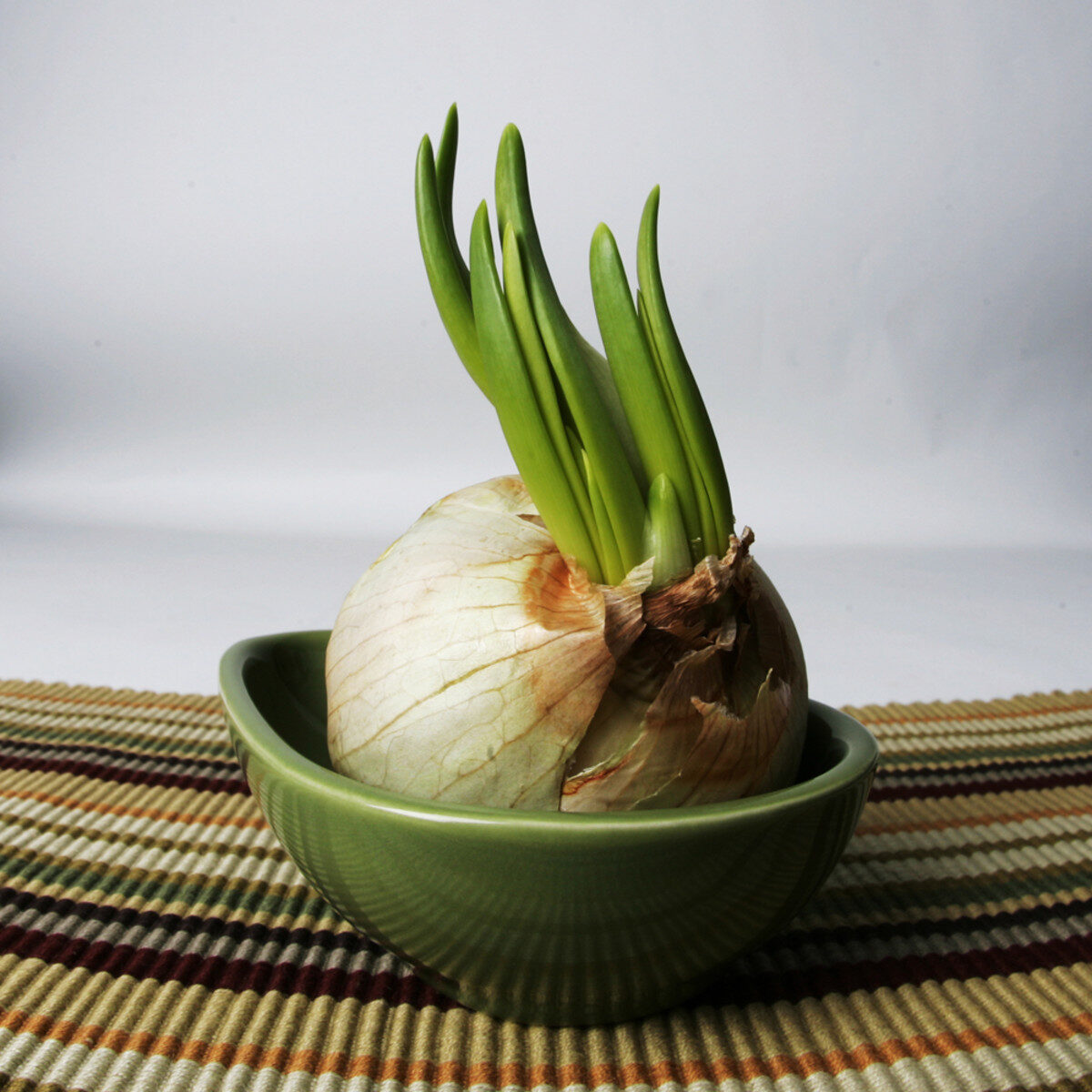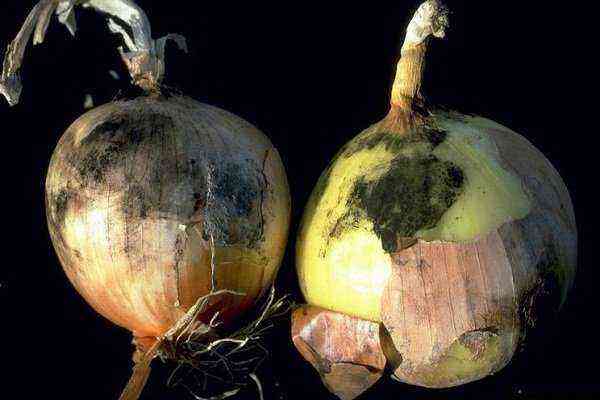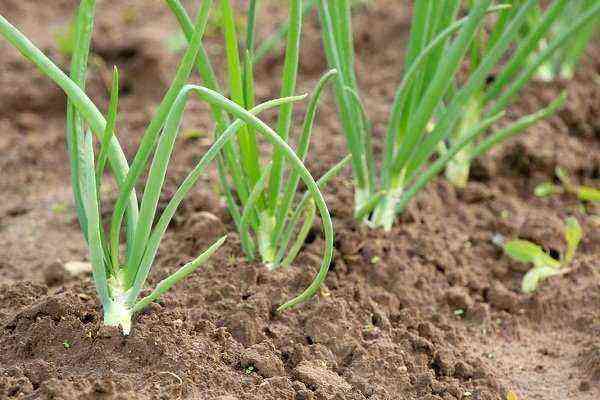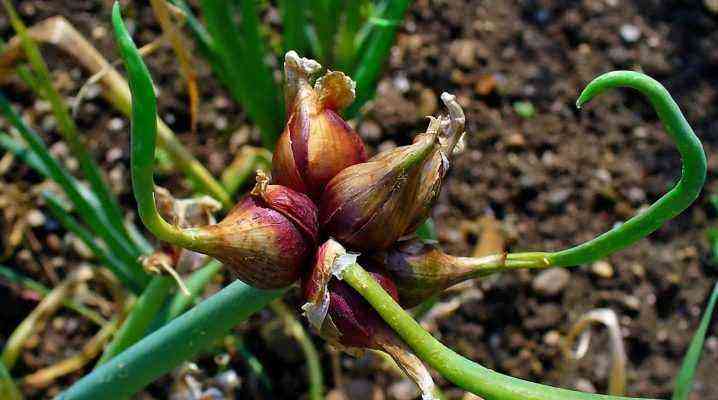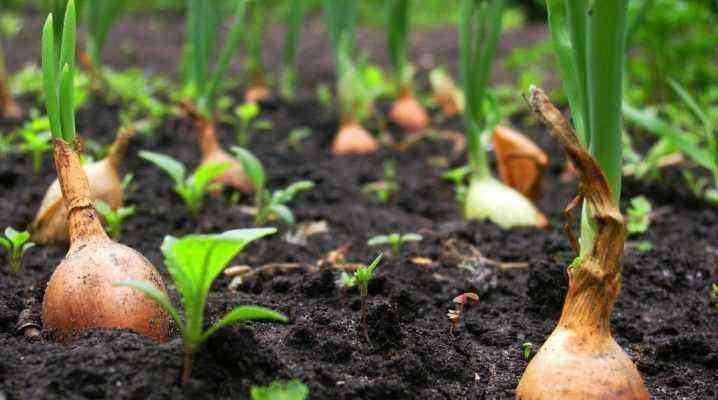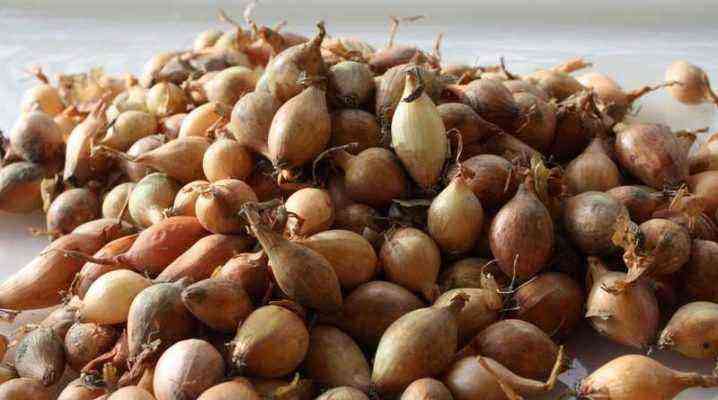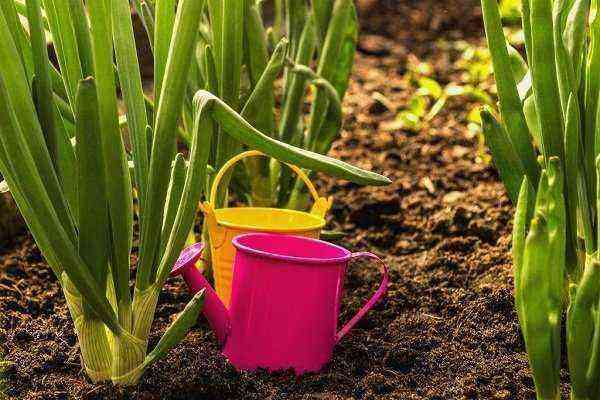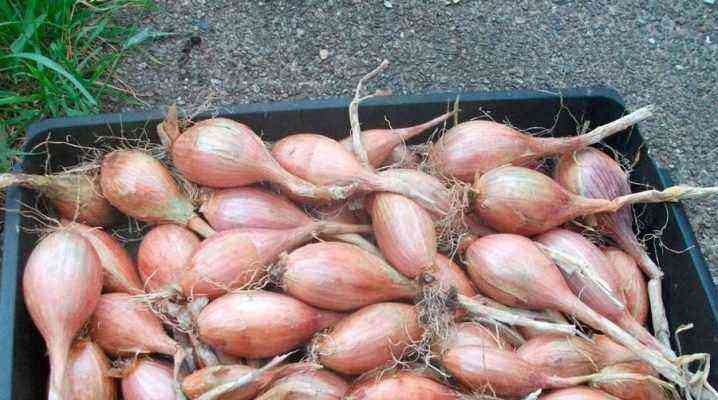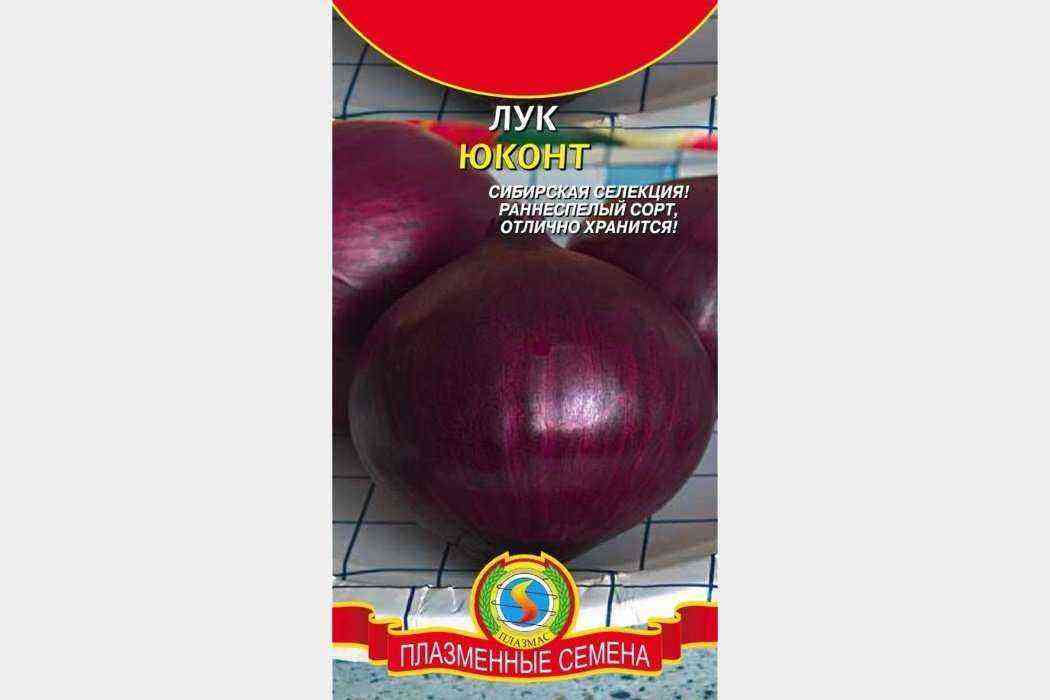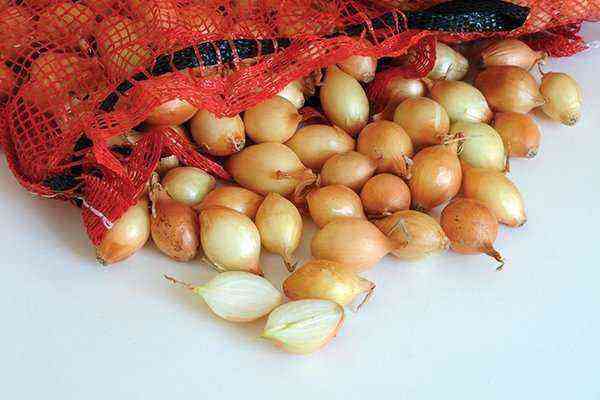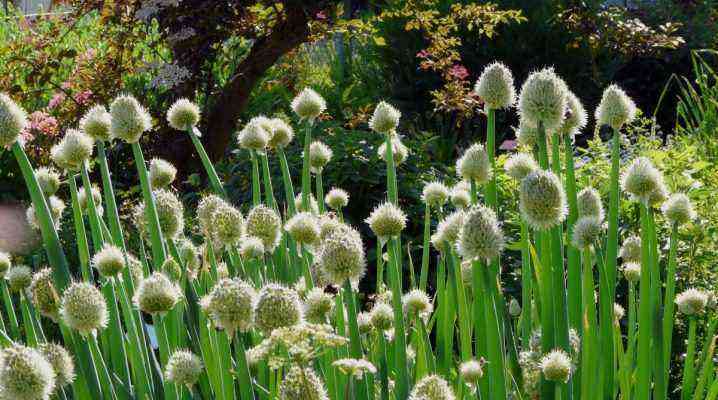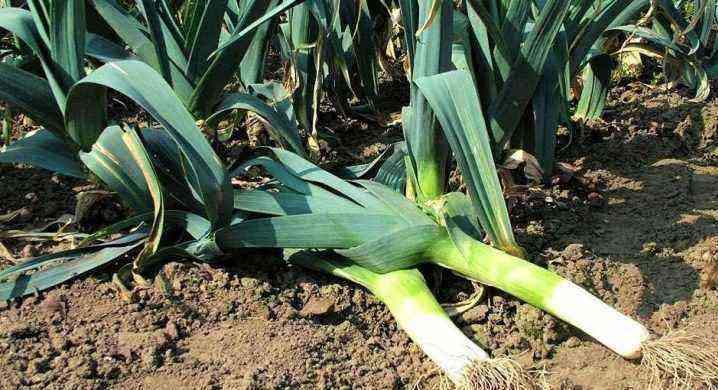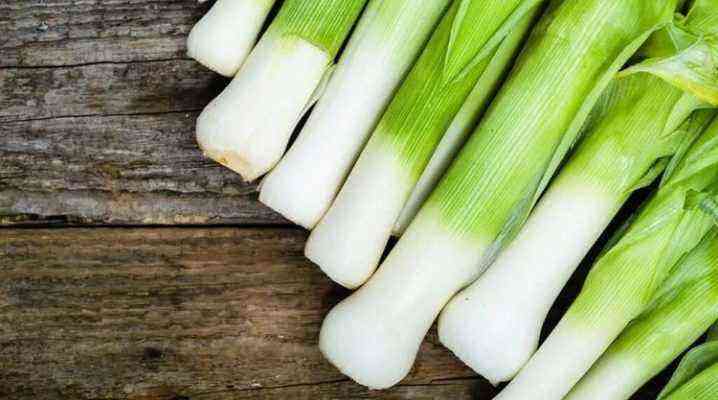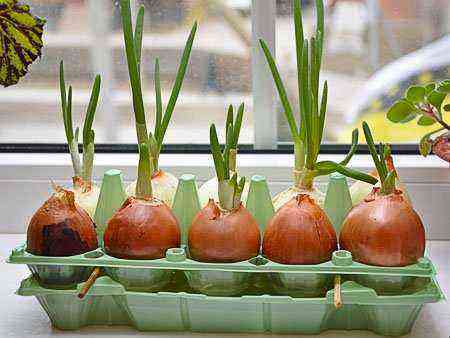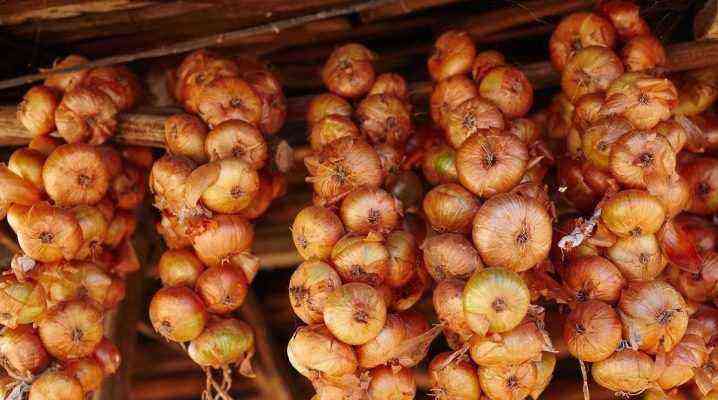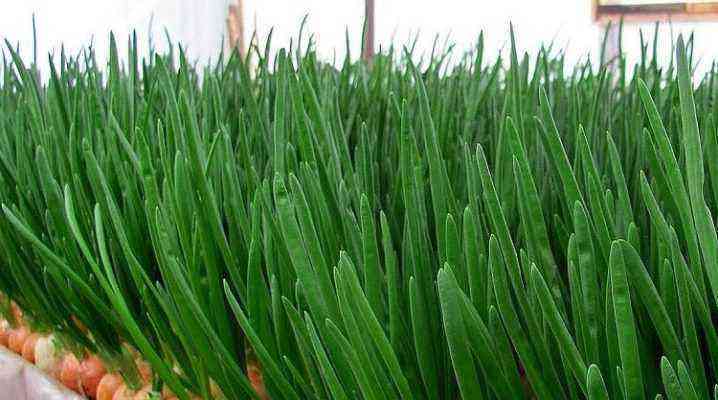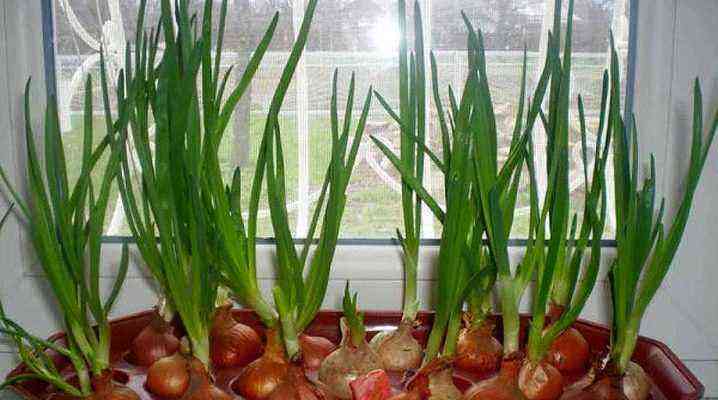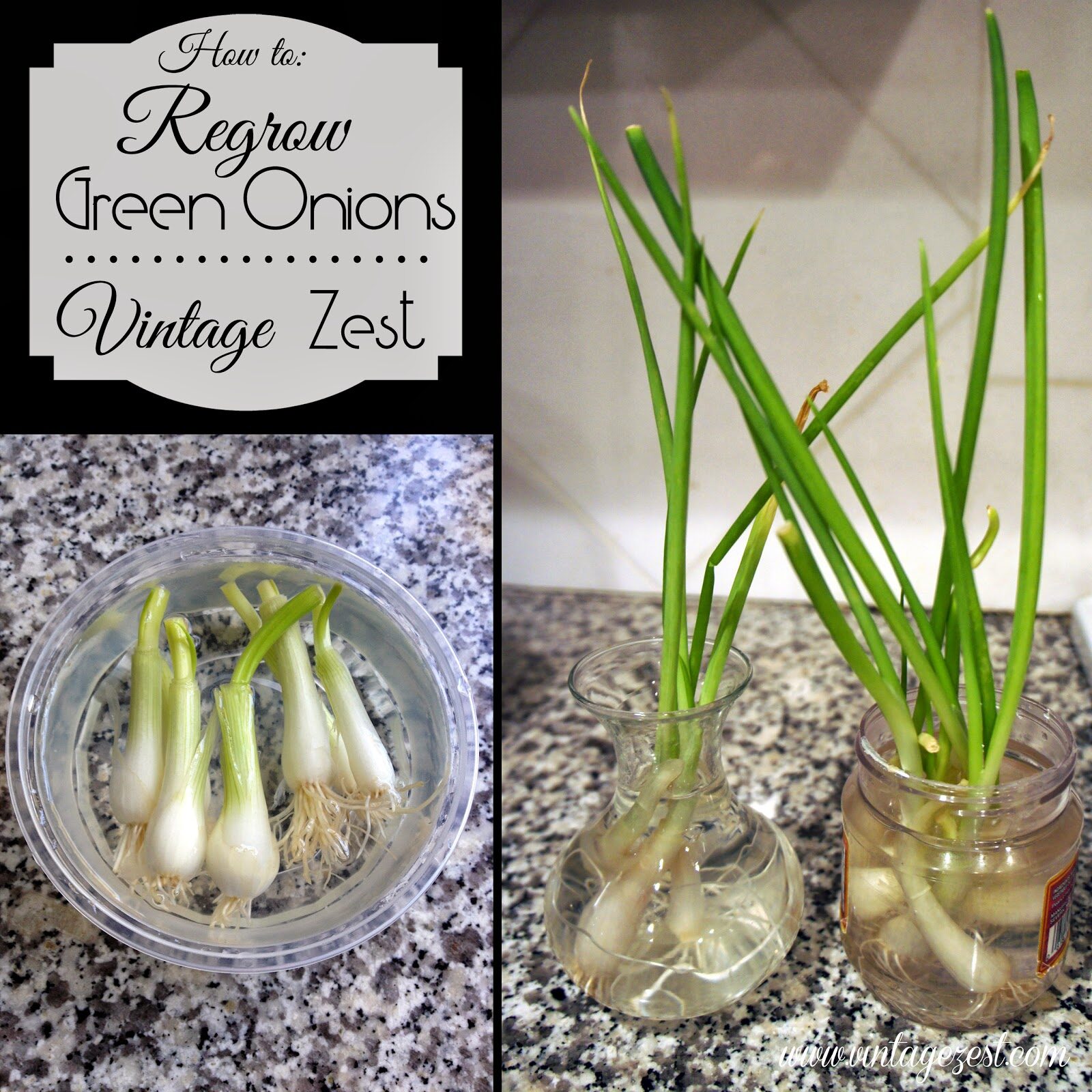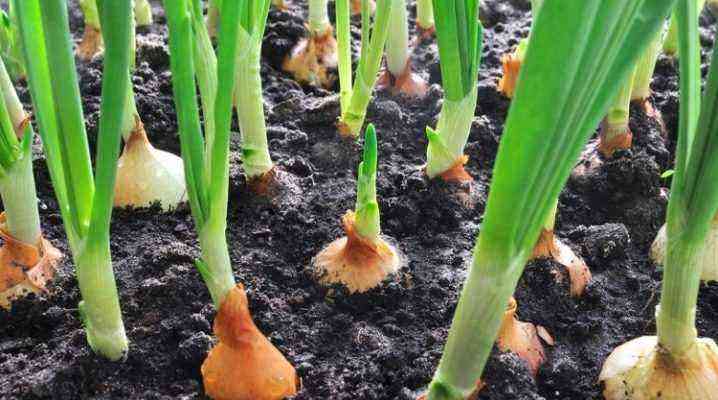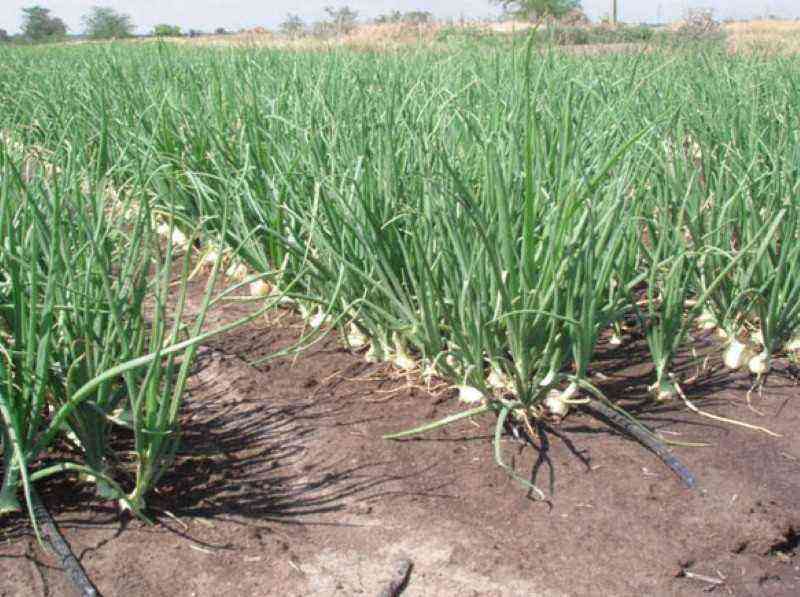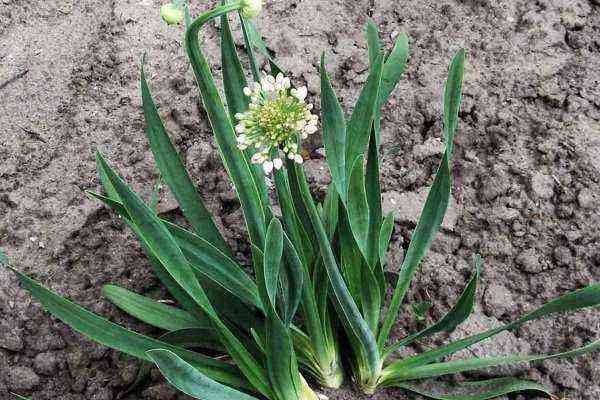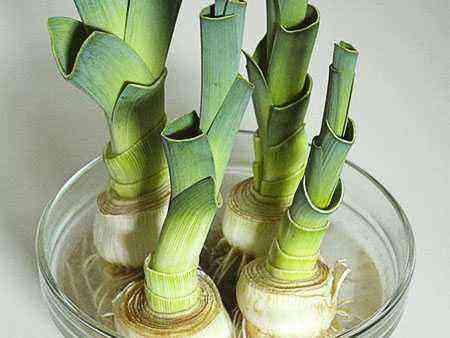Proper processing of onions before planting is a guarantee of a good harvest. This procedure is complex, as it involves the successive soaking of planting material in various disinfectants and disinfectants, which include salt and potassium permanganate. Their use will be effective if you follow all the rules for preparing onions and the recommendations of experienced gardeners.
Why is pre-treatment needed?
Some gardeners, after the purchase, immediately send the planting material to the ground, take good care of it and hope to get a bountiful harvest, but the result wants to leave the best:
- the bulbs are small;
- traces of decay are visible on soft heads;
- the germination coefficient is low due to the death of most of the onion seeds or sets.
Fortunately, such consequences can be avoided if the onion is subjected to pre-sowing processing. For this purpose, experienced gardeners traditionally use two public products, which are:
- Potassium permanganate (potassium permanganate, potassium permanganate). Regardless of which planting material is used for growing onions – purchased or homemade, it is impossible to detect signs of infections by visual inspection. Therefore, to ensure the reliability of seeds or sets, they must be decontaminated. For these purposes, a solution of potassium permanganate is used, which acts as follows:
- affects fungi and their spores, providing an antifungal effect (helps protect the future crop from gray rot, powdery mildew, late blight and other fungal pathologies);
- protects seed from wintering pests, producing an antiseptic effect;
- provides the culture with full growth and development, as it is a foliar fertilizer that allows you to deliver the necessary minerals to the plant.
- Salt. It helps to clean the seed from surface contaminants (dust, reagents), and most importantly, it acts as an excellent prevention against pests that pose a threat to the culture. These include:
- onion fly;
- thrips;
- pincers;
- nematodes.
After treatment with salt and manganese, the planting material becomes resistant to harmful microorganisms and endures aggressive environmental influences.
What planting material to process?
Before subjecting seeds or onion sets to soaking in any disinfectant solution, they must be prepared for this procedure, following the following sequence:
- Inspect and select quality seeds or sets. To do this, discard too soft and spoiled specimens, since strong shoots will not appear from them. For the same reason, remove completely dried seeds.
- If the bulbs did not let out feathers, to speed up this process, it is advisable to “cut” them – carefully cut off the dry husk, as it releases substances into the soil that inhibit the germination of the heads.
However, inexperienced gardeners, when “undressing” a set, can damage the roots or cut the neck too much. So, in the absence of relevant experience, it is worth delaying with such a technique – subsequently, when soaking, the dry neck will soften and no pruning is required. - The sowing stored at low temperatures after planting will go into the arrow and does not form a large head. To avoid such consequences, in the spring you need to dry and warm the bulbs, adhering to the following scheme:
- spread the seed near the battery or other heating device and hold for 14-20 days at a temperature of + 20 ° C;
- 8-10 hours before planting, warm up the seed at an elevated temperature (+35…+40°C).
- If the previous step was skipped or there is a need for faster heating of the bulbs, you can use an alternative method. It consists in soaking the sevka in hot (+45…+50°C) water for 10-15 minutes. After this procedure, the seed should be immediately immersed in cold water for the same time, and then dried. This technique requires less time, but gives almost the same result.
It is not worth drying the sets for longer than the indicated periods, otherwise they will be too dry and will not bring a good harvest.
A warm bow will take root better and give less arrows. This procedure is also a good prevention against neck rot and powdery mildew. To prevent the formation of an onion arrow, some soak the seed in a soda solution, but this procedure is less effective than pre-sowing heating.
Salt treatment procedure
The selected and heated seed before planting in the ground must first be treated with salt – sea or ordinary table salt. This is done in several stages:
- Humidification of planting material. During the storage season, the onion loses a lot of moisture, so the initial one should be moistened – placed for 2 hours in plain water. Thanks to this method, disinfection will be more effective.
- Saline preparation. Dilute salt in warm clean water at the rate of 1 tbsp. l. for 1 liter of water.
- Zamachivanie. Immerse the planting material for 2-3 hours in a saline solution.
- Flushing. After soaking the bulbs or seeds, rinse thoroughly with a change of several waters.
If onion treatment with saline was not carried out, then onion beds can be sprayed with this composition:
- Dissolve 300 g of salt in a bucket of water.
- Pour the onion with the finished composition.
- Wash the salt off the feathers of the plants by sprinkling them with clean water.
Such watering can be done once a season. If you do this more often, you will be able to more effectively deal with the onion fly, but the earth will become too saline. In this regard, the plant will lag behind in development or stop growing altogether. The salt itself will be difficult to wash out of the soil and will remain in it for a long time.
The procedure for processing potassium permanganate
After soaking in a saline solution, you need to start processing the planting material with potassium permanganate. Depending on the condition of the seeds or sevka, you can use a solution of varying degrees of concentration, on which the soaking time will depend. We will consider the possible options separately.
Method # 1
Assumes the use of a medium “power” solution. The rules for this method are:
- The concentration of the active substance is 1%. Therefore, you need to prepare a manganese solution of a dark purple color. To do this, you need to dilute 10 g of potassium permanganate in 1 liter of water.
- If it is not possible to accurately weigh the powder using a scale, we can assume that 1 tsp. without top holds 6 g of potassium permanganate.
- Dissolve a measured amount of powder in warm water.
- The soaking time of the bulbs or seeds in the solution is 40-50 minutes.
Such treatment will help if the planting material has fungal infections or is infected with mold.
After such a dressing, the onion should be immediately rinsed with warm water and dried for planting, or left under the film for 6-8 hours so that it releases roots. When planting, you need to act as carefully as possible so as not to damage the formed roots, otherwise you can significantly slow down the survival rate of the bulbs.
Method # 2
This technology requires compliance with the following rules:
- use a weaker solution – 35-40 g of potassium permanganate per 10 liters of water;
- increase soaking time to 2-3 hours;
- before immersing in water, onion seedlings must first be placed in a stocking so that later they can be easily removed from the solution;
- after soaking, rinse and dry the planting material.
In terms of the strength of the effect on seeds or onion sets, the second method is more gentle, so there is less risk of harming it. However, experienced gardeners prefer to expose the onion to a more aggressive effect in order to destroy all microbes and viruses on its surface.
Method # 3
The most aggressive technology, assuming the following rules:
- maximize the concentration of the active substance – up to 20-25 g per 1 liter of warm water (a solution of a dark beet color should be obtained);
- reduce soaking time to a minimum – up to 15-20 minutes.
Bulbs may darken after soaking. In any case, they need to be washed and dried well.
Such treatment can only be used if there is suspicion of onion infection with onion fly larvae, powdery mildew spores or other dangerous diseases. This solution is very strong, so it effectively disinfects onions. The disadvantage is that it can also damage the seed and reduce its germination.
Useful Tips
When processing onions before planting with salt and potassium permanganate, the advice of experienced gardeners should be taken into account. They are as follows:
- Soak sets or seeds just before planting to increase their chances of good germination.
- Especially carefully approach the pre-sowing processing of onions in regions that are characterized by frequent rains and, as a result, dampness. Under such conditions, the likelihood of infection of the onion planting increases significantly, so the onion needs a treatment that stimulates the production of immunity.
- When preparing solutions, strictly observe the dosage of the active substance, otherwise its excess will harm not only the pathogenic microflora, but also the planting material itself, so it will not be able to sprout – the ovaries of the root system can “burn out” without even being formed.
- So that the sevok does not rot, it cannot be kept in the prepared solution for too long. Soaking time in any solution is no more than 2-3 hours. When combining procedures, the time spent on them should not exceed 2 hours. Of these, about 1,5 hours can be allocated to saline solution, and 30 minutes to manganese.
- Soak the bulbs immediately before planting in the prepared heated soil. If they are disinfected and then left for a few more days in plain water, they will be re-immersed in the bacterial environment.
- Prepare a soaking solution immediately before processing so that it does not acquire bacteria that are dangerous for onions.
- It is necessary to soak the planting material before spring planting. Moisture-soaked seedlings in warm soil will quickly strengthen and begin to grow.
- If onions are planned to be planted before winter, such processing is undesirable. The fact is that the sevok soaked with moisture will sink into the ground (approximately in September – October), which every day will not be insulated, but, on the contrary, will freeze. For this reason, it can rot or freeze, which will leave a negative imprint on the yield of the plant.
- The previous rule may not be relevant for the southern regions, where even in autumn the soil retains heat for a long time. However, winters here do not differ in heavy snowfalls, so you need to organize high-quality warming of the beds for the winter season in advance.
- Pre-sowing treatment effectively fights bacteria and viruses, however, even after soaking, not all harmful microorganisms will be destroyed. Those pathogens that have already penetrated inside the seeds or sets can survive. In this regard, it is required to observe preventive measures to protect onions from diseases and pests.
Pros and cons of soaking
Despite the emergence of new special preparations for processing onions before planting, many gardeners prefer to use available products such as salt and manganese. Their advantages are as follows:
- contribute to the parallel formation of heads and feathers, which allows you to get a good harvest and greens, and elastic bulbs suitable for eating;
- planting material is disinfected, as a result of which the seedlings develop immunity to pathogens and temperature changes, that is, they get sick less often;
- allow you to protect the soil from diseases transmitted with seeds, as they prevent the process of decay.
As for the shortcomings, soaking does not have any, however, if the rules for carrying out this procedure are violated, all planting material can be destroyed. Here are some of the problems beginner gardeners often face:
- sets quickly lose their quality characteristics, acquiring unnatural softness;
- in the area of the formation of the roots of the system, traces of decay are observed.
To prevent such consequences, it is necessary to act strictly within the framework of the above instructions.
Before planting, onions need proper processing, which can be done with salt and potassium permanganate. If the saline solution will protect onions from soil pests, including onion flies and nematodes, then manganese will protect the planting material from fungal spores. However, you need to approach this issue with all responsibility, since there are many chances to make a mistake here.
